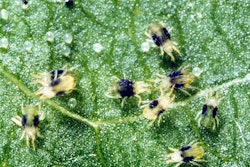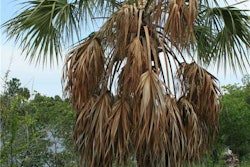 Photo: Pixabay
Photo: PixabayPests are a natural part of every landscape, but one that typically gets looked over is the “wascally wabbit.”
While rabbits may not immediately register in your customer’s mind as a pest, since they are cute and cuddly, they can cause damage to a landscape if left unchecked.
Since rabbits are opportunistic eaters, they will eat readily available plants no matter the season. They may munch on vegetables, fruits, and flowers during the spring and summer months, but can turn to shrubs and trees when the cold begins to set in.
Before deciding on a plan to keep rabbits out of your customer’s yard, first help them be sure that the pest menacing their yard is, indeed, a rabbit.
Identifying pest damage
Along with the obvious signs, such as droppings and footprints, rabbits also tend to make a clean 45-degree angle bite off small twigs or young plants, according to the University of Missouri Extension.
Most damage done by rabbits is done close to the ground because of their size. If you notice the bottom of your customer’s trees look a little gnawed or see some of their newer plants missing some leaves, rabbits may be the perpetrators.
Plants plagued by insects will have more sporadic, and sometimes significantly smaller, markings, and marks done by deer tend to have jagged edges.
Modify the habitat
A good first step to getting rid of unwanted garden guests is to remove the temptation to stay nearby. Without a protective cover and an ample food supply, rabbits will not want to stick around. This will help deter other pests as well.
Talk to your customers about removing debris, rock and brush piles, weed patches, and other types of cover that rabbits may use. Keeping the surrounding weeds and brush to a minimum will also help keep rabbits away from the border of the garden.
Fencing it in
There are many humane ways to keep rabbits out of your customer’s yard. One popular method is putting fences around particular plants and vegetables that your customers want to keep safe.
Fences can typically be inexpensive, especially if your customer has a smaller area to protect, but the bottom edge of the wire must be staked to the ground or buried several inches down to prevent the rabbits from burrowing under. As long as they are well maintained, perimeter fences of welded wire of, at most, 1-inch-by-2-inch mesh will help keep rabbits out of larger areas.
Repellents and trapping
If modifying the habitat and putting up fences fails your customers, repellents and removing the rabbits from the area are two more options.
Most repellents are unsafe to use on plants/crops that will be consumed, so be careful choosing what is used. There are two repellent categories: odor and taste-based.
As the names suggest, odor-based repellents keep rabbits at bay by giving off an unpleasant odor. These are usually applied directly to the soil around the area’s perimeter.
Taste-based repellents are contact repellents that must be applied directly to a plant, and they make the plants distasteful. These are water-soluble, and to retain their effectiveness are usually combined with a sticker solution. Without this solution, the repellents must be reapplied after it rains or after the plant grows.
While it may take a little more hands-on effort, trapping is another humane option that gets the rabbits out of the yard and allows them to be transplanted somewhere safer.
Live traps such as wire traps and wooden boxes are two choices when planning to trap a rabbit. Trapping in the summer may not yield the desired results since food is abundant and there will be more young rabbits born, but when food supply is short in the winter, baiting may prove to be more effective.
Traps should be left in areas where rabbit activity is evident, and foods like apples, carrots, dried clover, and corn can prove to be effective bait. Once the rabbits are caught, you or your customer can then transport them to another location where they can live without causing harm to more gardens.
For more information on creating a wooden box trap, click here.










